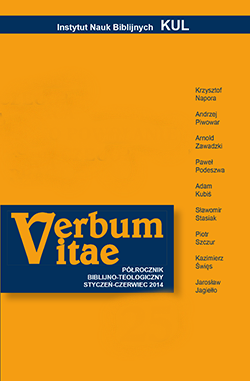Rozumienie śmierci w nauczaniu Ojców i Pisarzy Kościoła
The Concept of Death in the Patristic Tradition
Author(s): Dariusz KasprzakSubject(s): Christian Theology and Religion
Published by: Katolicki Uniwersytet Lubelski Jana Pawła II - Wydział Teologii
Keywords: concept of death; patristic tradition; “first death” (i.e. physical death); consolatio mortis; Christian burial; catacombs’ inscriptions
Summary/Abstract: The patristic view of death arose from the Greek anthropological philosophy. According to the ancients, man was made up of soul and body. Despite the Greek dualism, the Old Testament comprehensive approach to man meant that we are not two different, united natures, but rather a single, unified person. In early Christian writings man was portrayed as a living soul which after death awaits the resurrection of the body. Death was described as the major break in human nature . It is the “first death”, i.e. the physical one. Fathers of the Church gradually introduced to their explanation of death the elements from the Old Testament. They maintained that death was the result of Adam’s sin, and it was caused by the devil’s jealousy of man. They didn’t pay too much attention to the message of the New Testament, i.e. to the Jesus’ Sacrifice which expiated our sins and redeemed us from the course of the law. Their teaching was rather aimed to inspire the faith in the resurrection of bodies and in eternal life with God, by the use of a Christian version of consolatio mortis. Christians buried their dead what expressed their hope for the resurrection of believers laid in eternal sleep. The inscriptions found in the catacombs clearly illustrate this hope.
Journal: Verbum Vitae
- Issue Year: 2013
- Issue No: 24
- Page Range: 151-171
- Page Count: 21

